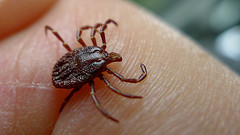 One of the items most travelers would prefer not to include on a list of travel experiences is picking up a nasty disease. In the past, we’ve published posts on how to protect yourself from travel-related diseases, how to check the latest traveler’s health reports for your destination, as well as health concerns for travelers in underdeveloped countries.
One of the items most travelers would prefer not to include on a list of travel experiences is picking up a nasty disease. In the past, we’ve published posts on how to protect yourself from travel-related diseases, how to check the latest traveler’s health reports for your destination, as well as health concerns for travelers in underdeveloped countries.
The following are the top 5 easiest-to-get and worst traveler’s diseases we’ve heard about.
- Hepatitis A, which is one of the most common diseases contracted through poorly-cooked food, contaminated water, Â and unsafe sex. While a vaccine is available, it’s always a good idea to make sure the food you eat is clean and well cooked.
- Montezuma’s Revenge, which is the common term for any case of traveler’s diarrhea and earned it’s moniker from travelers visiting Mexico. Of course, this hazard isn’t isolated to Mexico and can occur just about anywhere due to different levels of immunity to different types of bacteria sometimes found in food or water consumed by the traveler.
- Dengue Fever, which is well known in Thailand, the South Pacific and in Africa and spreading to new regions (see the official Dengue map). According to the CDC, dengue fever, also known as ‘breakbone fever’, affects as many as 100 million people every year and is spread by mosquitoes.
- Malaria, which is another disease spread by mosquitoes, is treatable if you get it and preventable if you prepare. You can request anti-malaria pills from your doctor prior to traveling in Asia, Africa, and South America where malaria cases are common.
- Lyme Disease, which is a danger particular to North America and spread by tick bites and presents itself as severe headaches and a fever. The best prevention? Bug repellent.
Of course, while not specifically a disease, parasites also present trouble for travelers. Parasites come in a variety of forms but generally tapeworms, intestinal parasites and amoeba are the most common. Humans pick up tapeworms and intestinal parasites from unwashed fruits and veggies or contaminated water. Amoeba can be found in natural mineral pools and they enter through the nose when a visitor submerges. So, know your water and food sources and have appropriate travel medical coverage. You know – just in case.
